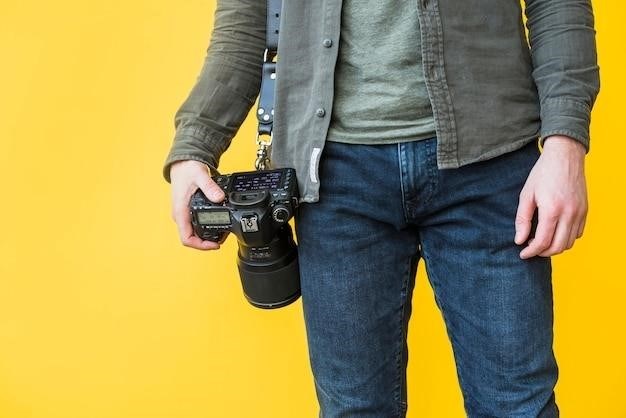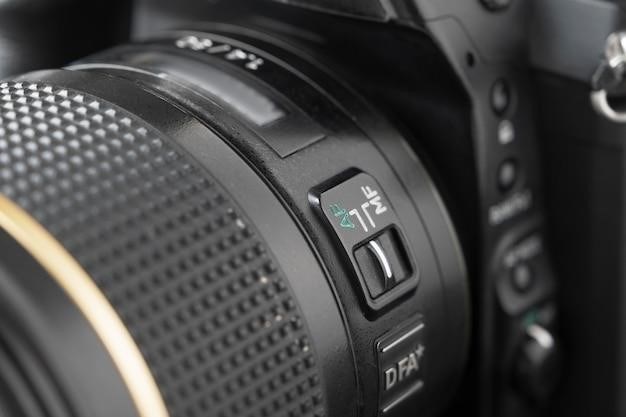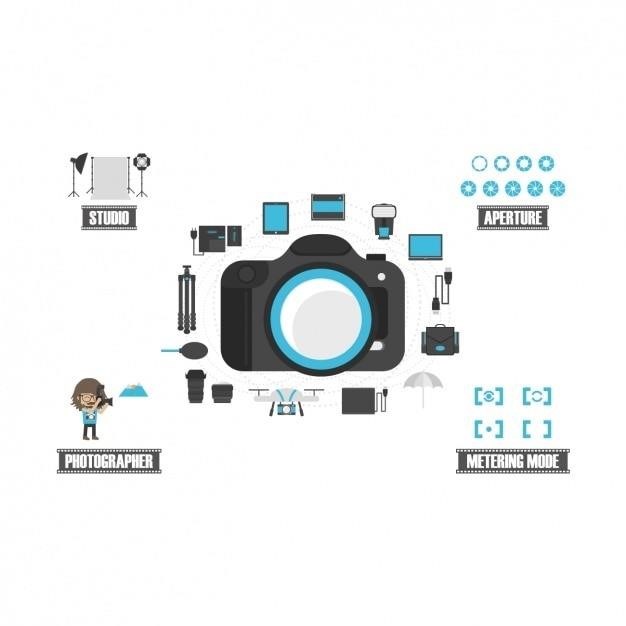
nikon d3300 camera manual
Nikon D3300 Camera Manual⁚ A Comprehensive Guide
This guide provides a complete overview of the Nikon D3300’s features, functionalities, and troubleshooting tips. Learn about accessing the manual, downloading the PDF version, and using the Nikon Manual Viewer 2 app. Master key features, shooting modes, and image quality optimization.
Accessing the Nikon D3300 Manual
Locating your Nikon D3300’s manual is straightforward. The printed version should be included within the original product packaging. If you’ve misplaced the physical copy, obtaining a digital version is equally simple. Nikon provides readily available PDF downloads of the D3300 user manual directly from their official support website. This online resource offers multiple language options, ensuring accessibility for users worldwide. Alternatively, a convenient mobile application, the Nikon Manual Viewer 2, is available for both iOS and Android devices. This app allows for easy access and on-the-go reference to the comprehensive manual, eliminating the need for carrying a physical copy. Remember to check Nikon’s official site for the most up-to-date version and ensure you’re downloading from a trusted source to avoid potential malware or inaccuracies.
Downloading the PDF Manual
Downloading the Nikon D3300’s PDF manual is a convenient alternative to using the printed version. Navigate to Nikon’s official support website; a direct link is usually provided on product pages or through a search for “Nikon D3300 manual.” Once on the support page, look for the downloadable manual section. You’ll likely find options for different languages and regions. Select the appropriate version for your needs. Before downloading, carefully read the terms and conditions; this is crucial for understanding usage rights and any restrictions associated with the downloaded material. After accepting the terms, the download should begin automatically or require a click to initiate. The file will likely be a large PDF, so ensure you have sufficient storage space on your device. Once downloaded, you can easily access it using a PDF reader, such as Adobe Acrobat Reader (available for free online), enabling convenient offline access to the complete instruction manual.
Using the Nikon Manual Viewer 2 App
The Nikon Manual Viewer 2 app offers a user-friendly mobile alternative to the traditional PDF manual. Available for both iOS and Android devices, this free app allows you to access the D3300’s manual anytime, anywhere. Download the app from your device’s respective app store (Google Play or the Apple App Store). Once installed, launch the app and you’ll likely find a search function to easily locate your camera model, the Nikon D3300. The app provides a well-structured digital version of the manual, allowing for easy navigation through its various sections. Features like searchable keywords and interactive elements can greatly enhance the user experience, making it easier to find specific information quickly. Remember that an internet connection might be required for the initial download of the manual or for certain app features. However, after downloading, you can largely use the app offline for convenient access to the D3300’s instructions.
Understanding Key Features
This section delves into the core functionalities of your Nikon D3300, covering camera controls, shooting modes, and image quality optimization through ISO settings. Master your DSLR’s capabilities.
Camera Controls and Settings
Familiarize yourself with the Nikon D3300’s intuitive controls. The mode dial offers various shooting options, from automatic to fully manual. Master the shutter speed and aperture dials for precise exposure control. Understand the ISO settings to adjust sensitivity to light, impacting image quality and noise levels. Explore the menu system to customize settings such as white balance, image size, and image quality (JPEG or RAW). Learn to navigate the live view screen for easier composition and focusing. The D3300’s user-friendly interface helps you easily adjust settings to match your creative vision. Properly using these controls enables you to capture stunning images in diverse shooting situations. Remember, understanding your camera’s settings is crucial for achieving desired photographic results. Experiment with different combinations to discover the optimal settings for various lighting conditions and subject matters.
Shooting Modes and Their Applications
The Nikon D3300 offers a variety of shooting modes to suit different photographic situations and skill levels. Auto mode simplifies photography for beginners, automatically adjusting settings for optimal results. Scene modes provide preset settings for common scenarios like landscapes, portraits, and sports. Aperture Priority (A) and Shutter Priority (S) modes allow you to control either aperture or shutter speed while the camera adjusts the other, enabling creative control over depth of field and motion blur. Manual (M) mode gives you complete control over both aperture and shutter speed, ideal for experienced photographers. Guide mode provides helpful on-screen instructions and explanations of each mode’s function and effect. Understanding and utilizing these different shooting modes allows you to capture images precisely tailored to your artistic vision and specific photographic circumstances. Experiment with various modes to find which best suits your photographic style and subject matter.
Image Quality and ISO Settings
The Nikon D3300 boasts a 24.2-megapixel DX-format sensor, capable of producing high-resolution images with excellent detail. Understanding ISO settings is crucial for optimizing image quality in various lighting conditions. Lower ISO values (like ISO 100) result in cleaner, less noisy images, ideal for well-lit scenes. Higher ISO values (e.g., ISO 3200 and above) are necessary in low-light situations but introduce more digital noise (grain). The D3300’s sensor performs well at lower ISO settings, producing images with minimal noise and excellent sharpness. At higher ISO values, noise becomes more noticeable, impacting image quality. To mitigate noise at higher ISOs, consider using noise reduction features in post-processing or shooting in RAW format for more flexibility during editing. Experiment with different ISO settings to determine the optimal balance between image brightness and noise levels for your specific shooting conditions. Remember that image quality is also affected by factors such as lens quality, focus, and proper exposure.

Troubleshooting and Maintenance
This section details common Nikon D3300 issues, solutions, cleaning tips, and lens troubleshooting. Learn how to maintain your camera for optimal performance and longevity.
Common Issues and Solutions
Encountering problems with your Nikon D3300? This section offers solutions to frequently reported issues. Does your camera exhibit slow startup times? The manual suggests checking battery levels and ensuring the lens is properly mounted. Experiencing blurry images? Explore the camera’s autofocus settings, ensuring they’re correctly configured for your shooting conditions. Is your camera displaying error messages? Refer to the troubleshooting section in the manual for detailed explanations and remedies. Remember, proper lens cleaning and camera care are crucial. Consult the manual for guidance on cleaning the sensor and lens elements. Addressing these common problems can significantly enhance your photographic experience and ensure you capture clear, high-quality images. Regularly review the manual for additional tips and troubleshooting advice. This proactive approach allows you to enjoy your D3300 to its full potential, minimizing downtime and maximizing your creative output. Remember to always refer to the official Nikon D3300 manual for the most accurate and comprehensive troubleshooting information.
Camera Care and Cleaning
Maintaining your Nikon D3300’s pristine condition is essential for optimal performance and longevity. Begin by protecting your camera from dust and moisture. Store it in a dry, cool environment, ideally in a protective case or bag when not in use; Regularly inspect the camera body and lens for any signs of dirt or debris. Use a soft, microfiber cloth to gently wipe away dust and fingerprints. For stubborn smudges, use a lens cleaning solution specifically designed for camera equipment and apply it sparingly to the cloth, not directly to the lens. Avoid harsh chemicals or abrasive materials that could scratch the camera’s surface or damage the lens coatings. When cleaning the lens, move in a circular motion from the center outwards to avoid smearing. Pay close attention to the lens contacts, ensuring they are free of dust. Use a blower brush to remove any dust particles from hard-to-reach areas. Remember to consult your Nikon D3300 manual for detailed instructions on sensor cleaning and other maintenance procedures.
Troubleshooting Lens Problems
Addressing lens issues effectively ensures optimal image quality with your Nikon D3300. First, check for any visible obstructions like dust or debris on the lens elements. Clean the lens carefully using a microfiber cloth and appropriate cleaning solution. If focusing problems persist, verify that the lens is correctly mounted on the camera body, ensuring a secure connection. Then, inspect the lens contacts for any dirt or damage, cleaning them gently if needed. For autofocus issues, confirm that the lens’s AF/MF switch is set to ‘AF’ and that the camera’s autofocus mode is appropriately selected. If using a third-party lens, ensure its compatibility with the Nikon D3300. Examine the lens for any physical damage, such as cracks or dents, that may affect its functionality. If the problem continues despite these steps, consult your Nikon D3300 manual for further troubleshooting guidance. Consider contacting Nikon support or a qualified camera repair technician for professional assessment and repair if necessary. Proper lens maintenance is crucial for preserving its functionality and delivering sharp, clear images.

Advanced Techniques
Explore manual focus, exposure control, and diverse shooting modes to enhance your photography. Learn post-processing and image editing techniques to refine your images.
Manual Focus and Exposure Control
Mastering manual focus and exposure control unlocks the Nikon D3300’s full creative potential. Manual focus allows precise control over the point of sharpness, ideal for macro photography or situations where autofocus struggles. Switch your lens to “M” mode, and use the focus ring to adjust sharpness. The D3300’s viewfinder or live view screen can be used to check focus. For exposure control, use the camera’s manual (M) mode to set both aperture and shutter speed independently. This allows for creative control over depth of field and motion blur. Use the exposure meter as a guide; it indicates whether your chosen settings will result in an overexposed, underexposed, or correctly exposed image. Experiment with different combinations to achieve your desired effect. Practice is key; start with simple scenes and gradually progress to more complex situations. Remember to check your histogram to ensure your exposures are within a usable range. Understanding manual focus and exposure control allows for artistic expression beyond the limitations of automatic modes. This knowledge is invaluable for developing a strong photographic style and capturing impactful images.
Using Different Shooting Modes
The Nikon D3300 offers a variety of shooting modes to suit different photographic scenarios and skill levels. Understanding and utilizing these modes is crucial for maximizing your camera’s capabilities. Beyond the fully automatic mode, explore the scene modes (like portrait, landscape, sports, etc.) for optimized settings based on the subject. For more control, switch to aperture-priority (A) or shutter-priority (S) modes. In A-mode, you set the aperture, influencing depth of field, while the camera automatically selects the shutter speed. In S-mode, you set the shutter speed, controlling motion blur, and the camera automatically chooses the aperture. For complete creative freedom, use manual (M) mode, allowing you to independently adjust both aperture and shutter speed. Experiment with each mode to understand its strengths and limitations. The D3300’s guide mode provides helpful on-screen instructions, guiding you through various settings and techniques. Consider using this feature to learn the nuances of each shooting mode before venturing into more advanced photographic scenarios. Mastering these modes significantly enhances your ability to capture a wider variety of images, from sharp landscapes to action-packed sports shots.
Post-Processing and Image Editing
While the Nikon D3300 captures excellent images directly from the camera, post-processing can significantly enhance their quality and impact. Explore various software options, from free programs like GIMP to professional-grade applications such as Adobe Lightroom or Photoshop. Learn basic adjustments like cropping, straightening, and brightness/contrast control. Experiment with more advanced techniques such as white balance correction, sharpening, and noise reduction, especially beneficial when shooting at higher ISO settings. Color grading and vibrancy adjustments can further enhance the mood and aesthetic appeal of your photos. For more advanced users, explore layer masking and other tools for selective editing. Consider online tutorials and resources for in-depth guidance on specific software and techniques. Remember that post-processing is a creative process; experiment to find your preferred style and workflow. Proper post-processing can transform your images, bringing out details, improving composition, and ultimately creating more compelling and impactful photographs. Don’t be afraid to experiment and learn from your edits.

